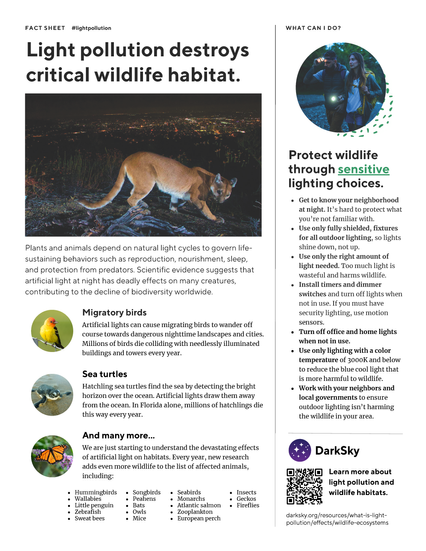Dark Skies Initiative
- Green Maynard

- Feb 22, 2024
- 2 min read
Updated: Feb 19
As towns become increasingly dense and lighting options more affordable, there is a notable increase in the amount of light pollution across the state and around the world. Only 30 years ago, one could easily see the Milky Way on any clear night. This is no longer the case.
Light pollution (which includes over-lighting and using the wrong color light) has detrimental effects on our environment. The brightening night sky directly impacts:
Wildlife
Light pollution is harmful to many animals, including mammals, birds, and insects, who rely on natural cycles of light and dark to regulate their behavior. Light pollution disrupts migration, interferes with reproduction cycles, affects predator-prey dynamics, and changes pollination patterns and seed dispersal—impacting plant populations and the overall health of ecosystems. According to DarkSky International:
"Artificial light can cause migratory birds to wander off course and toward the dangerous nighttime landscapes of cities. Every year millions of birds die colliding with needlessly illuminated buildings and towers. Migratory birds depend on cues from properly timed seasonal schedules. Artificial lights can cause them to migrate too early or too late and miss ideal climate conditions for nesting, foraging, and other behaviors."
"Many insects are drawn to light, but artificial lights can create a fatal attraction. Declining insect populations negatively impact all species that rely on insects for food or pollination. Some predators exploit this attraction to their advantage, affecting food webs in unanticipated ways."
Human Health
It also has detrimental effects on human health, potentially increasing our risk for sleep disorders, depression, diabetes, breast cancer, and more.
Climate Change
According to DarkSky International, "outdoor lighting uses about 120 terawatt-hours of energy, mostly to illuminate streets and parking lots. That’s enough energy to meet New York City’s total electricity needs for two years!"
They also estimate that "at least 30 percent of all outdoor lighting in the U.S. alone is wasted, mostly by lights that aren’t shielded, releasing of 21 million tons of carbon dioxide per year."
Learn More & Help
You can help by turning off unnecessary lights at night. When you must use outdoor lighting, be sure to use a yellow-hued bulb. For more information on responsible outdoor lighting and what you can do to help, visit DarkSky Massachusetts or DarkSky International.
Darkness in Distress: A Presentation by Kelly Beatty
Kelly Beatty has been explaining the science and wonder of astronomy to the public since 1974, when he joined the staff of Cambridge-based Sky & Telescope magazine. An award-winning writer and communicator, he holds a Bachelors degree from the California Institute of Technology and a Master’s degree in science journalism from Boston University. Kelly has been active in efforts to reduce light pollution for more than 30 years.













Comments